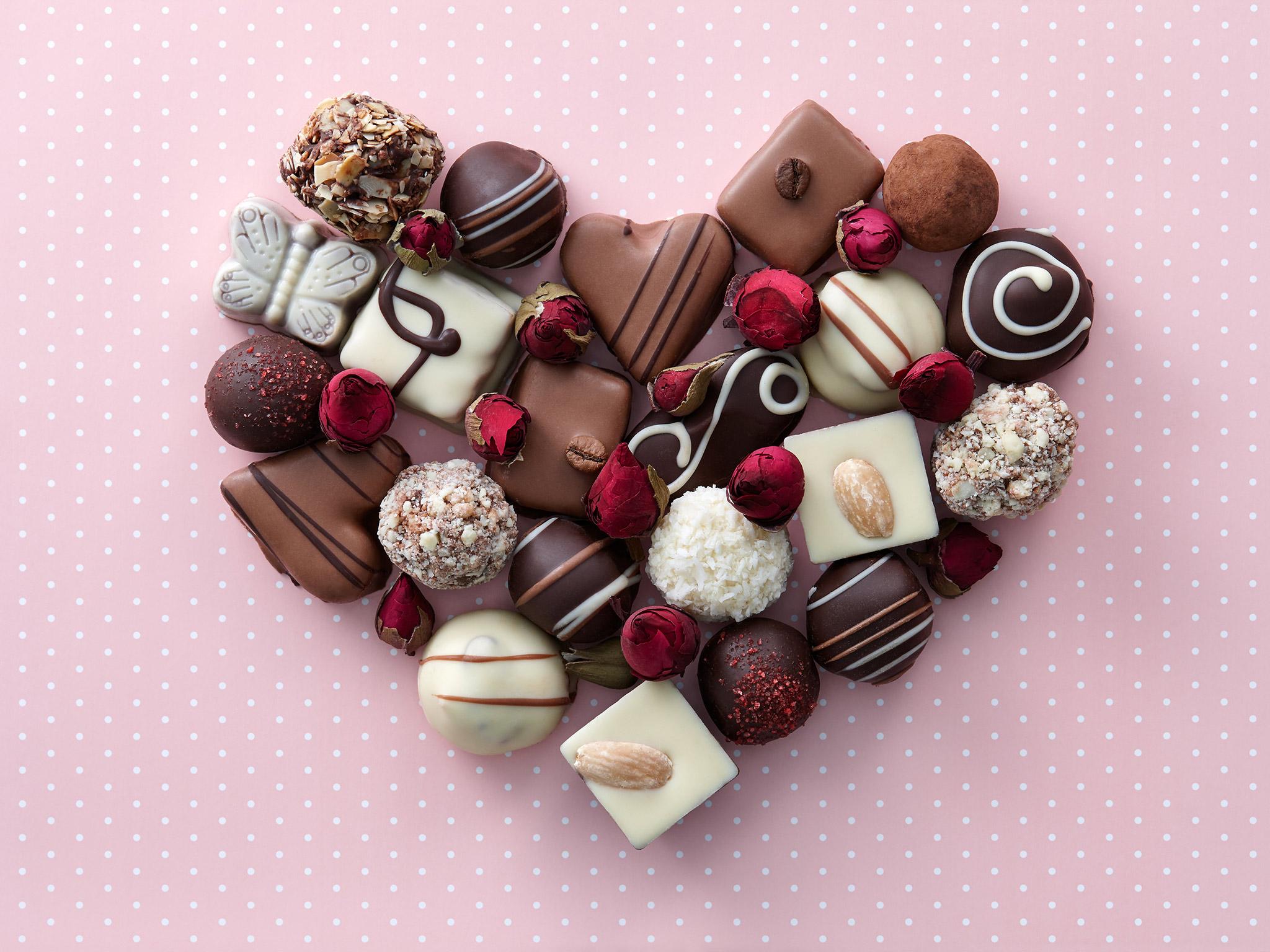Valentines Day 2017: Why we give chocolates on 14 February
Food historian Professor Rebecca Earle of Warwick University maps how chocolate became a Valentine's Day staple

‘Say it with chocolate’, urged a Cadbury’s advertising campaign a few years ago. The advertisements suggested that a commercially manufactured bar of chocolate was a particularly suitable way of conveying heartfelt sentiments of love and intimacy. We apparently take such advice to heart. As Valentine’s Day approaches, lovers up and down the country are perusing the confectionery aisles, looking for a box of chocolates that conveys sincerity and devotion at the desired price point. The holiday sees a huge spike in chocolate sales, most of which take place on Valentine’s Day itself. When it comes to courtship we’re apparently not very good at planning ahead.
The Victorians knew all about chocolate’s potential as a tool of seduction. Young men, observed one nineteenth-century commentator, seem ‘to know by instinct’ that the surest weapon in a suitor’s arsenal was a box of chocolates. Etiquette books and chocolate advertisers alike encouraged the view that an exchange of chocolates between a man and a woman was tantamount to a declaration of love. Giving a young woman a box of chocolates was a way for a man to demonstrate his affection, while at the same time displaying his good taste and discernment in selecting a particularly suitable box. Advertisers worked hard to convince consumers that there was a direct relationship between the amount of money spent and the intensity of emotions. ‘Refined women insist on Schrafft’s chocolate bon bons’, stated one early twentieth-century advertisement.
Manufacturers produced a plethora of packaged chocolates, from modest individual bonbons to costly assemblages swathed in multiple layers of wrapping and ribbons that mimicked the clothing worn by Victorian ladies. Historians have noted the ‘intriguing similarity between the elaborately enrobed boxes of candy and the layers of lace, crinoline, and silk that concealed the wooer’s presumed prize’.
Because chocolates were so closely associated with courtship, and sex, Victorian etiquette books warned that single ladies should never accept chocolates ‘from gentlemen to whom they are neither related nor engaged’. It was equally taboo for women to play the lead by giving men chocolates. Only the most daring would do this. The lucky recipient of a box of chocolates could however play Eve, tempting the giver with the suggestive offer of a taste.
And if you have any doubt about the potential connotations of buying chocolate to eat yourself, watch any advert for a Flake bar.
Is chocolate an aphrodisiac? The scientific jury is still out, but generations of Europeans certainly hoped it was. Give an old woman some chocolate, affirmed a bawdy seventeenth-century song, and it will make her ‘long for you know what’. Chocolate, stated a medical treatise, ‘renders people lusty, and prompts ‘em to Venery’. Other writers suggested it might help offset the impotence caused by too much coffee. From this to a Valentine’s day selection tray is but a short hop and a jump.
Except that the lusty chocolate these writers celebrated wasn’t a bonbon or a truffle or even a Flake bar. It was a mug of hot chocolate. The cocoa that today conjures up images of elderly couples in slippers, or perhaps little children in pajamas, was once redolent of sexuality. Men were particularly fearful that women might use their occult powers to bewitch them with a cup of magic chocolate. The archives of the Spanish Inquisition are full of denunciations of women said to have ‘tied’ some hapless man with a cup of hot chocolate, so that he couldn’t have sex with anyone else. Francisco de las Casas for instance complained that ever since he’d drunk chocolate with Michaela de Orbea he’d been impotent with other women. He was certain it was the result of some magic charm she’d concealed in the drink.
So if you’re offered a cup of cocoa this Valentine’s Day, think carefully before imbibing. If the gift is a box of chocolates, Victorian advice manuals would suggest you can start shopping for wedding rings. Mind you, statistics for alcohol sales on 14 February suggest that when it comes to wooing, many of us are relying Dorothy Parker’s insight that ‘candy is dandy, but liquor is quicker’.
Join our commenting forum
Join thought-provoking conversations, follow other Independent readers and see their replies
Comments